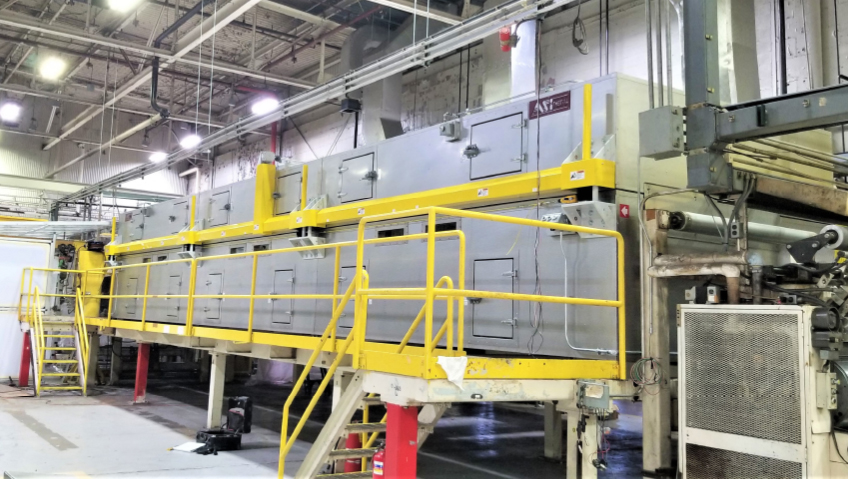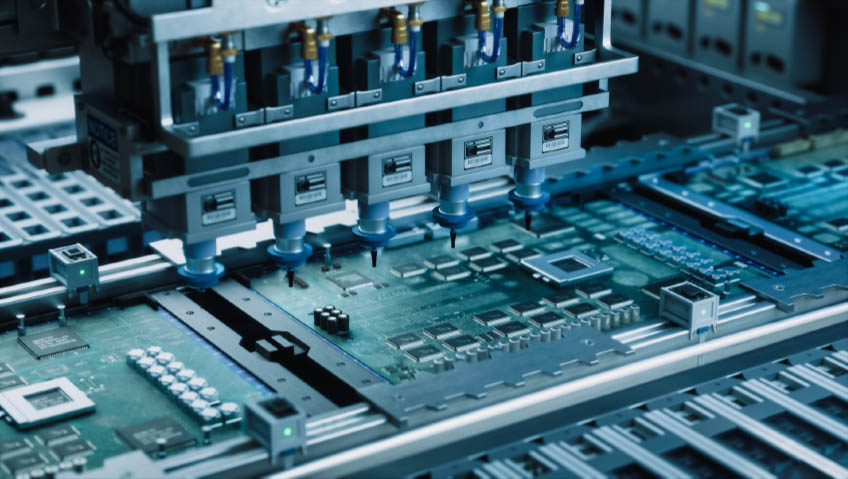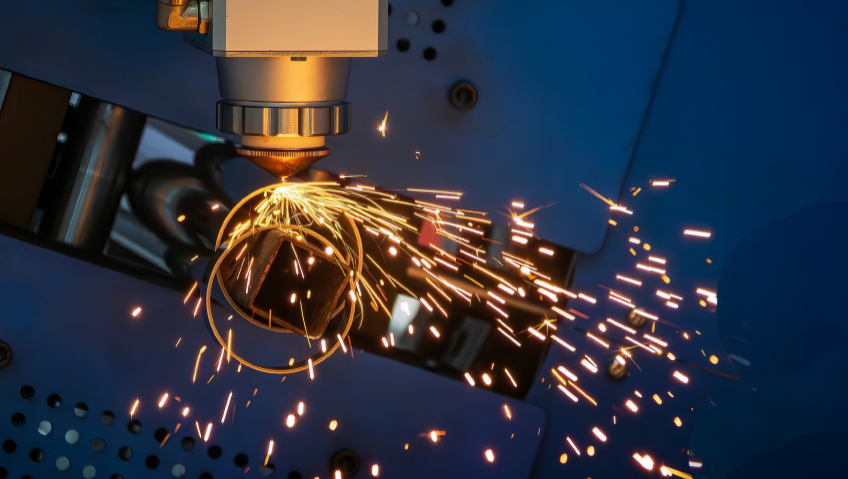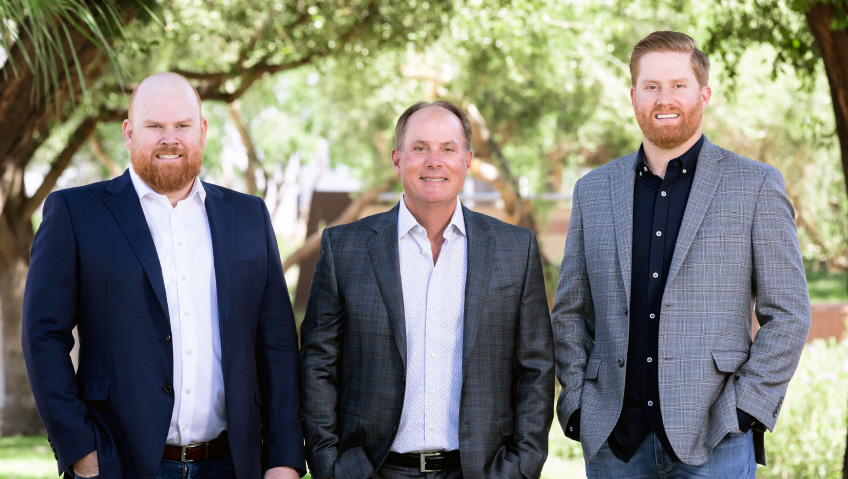While many companies claim to make their customers’ needs a top priority, Green Bay, Wisconsin-based ASI has more than succeeded in this endeavor as it designs and builds custom-drying solutions in a customer-centric process that places service, consultation and communication at the forefront.
Now with an impressive 35 years in the business, ASI manufactures custom drying solutions in its 65,000 square-foot facility for the converting of film, foil, paper, nonwovens, and other flexible web-based materials, as well as products conducive to a continuous process environment. This variety of applications and industries results in dryers ranging from as short as 36 inches to monsters over 200 feet in length.
In the hands of ASI’s clients, these products are destined for end uses in any and every industry, such as flexible packaging, construction materials, batteries, automotive products, labels and adhesives, and paper, graphic arts and textiles, to name a few.
“Up until the late 90s and early 2000s, ASI’s focus was on graphic arts dryers, newsprint, and magazines,” says Jason Allington, Vice President and General Manager. “Now we’re focused on custom drying systems and a completely different business model. Where before we were making many of the same type of dryer, now we’re not making as many, but they’re all unique and designed to fit an individualized customer’s process.”
With an eye to specific drying needs and control requirements, ASI works closely with clients to meet performance and control specifications, while also adhering to specific space constraints. The technology is impressive and the inventory is extensive, but customer care remains paramount.
“That’s where we’re still at today, always working on new technologies and making our systems more efficient and finely-tuned,” says Allington. “All of our systems are custom. We base the sizing of these systems off of proprietary modeling software and this has been tuned and tested for our technology, allowing us to design a system that not only fits the customer’s application, but also ensures the environment will be safe and [that] they’re going to be operating without any sort of damage to the equipment or personnel.”
As many of ASI’s systems are utilized to dry volatile solvents, safety is a major priority for the company, he says.
ASI has made a considerable effort to develop its customer service group, with three dedicated service engineers who take turns being on call, even after hours.
“If something happens, someone will answer the phones,” says Angela Krueger, Purchasing and Marketing Manager. “And they do everything from troubleshooting to parts sales. They’re also the ones who fine-tune the equipment at startup, balance the air flows, and also train the operators and maintenance people on how to operate our systems and get the best out of them. They maintain them so they keep working, and our dryer systems last for decades.”
The ASI team not only create products that will keep customers satisfied, but they also strive to truly understand what the client needs now and years from now.
“One of the big focuses is always trying to work with customers on their process in order to understand what they’re doing so we can apply what we know to it,” says Allington. “We don’t always know what their process is or how it works, but through conversations we’ll find out little nuanced things that they may not think are important but do apply to their application.”
Because of that, customers will come to ASI with other problems that might not be dryer related, whether it’s condensation at the dryer entrance or exit, or recovering solvent. ASI prides itself on helping clients with equipment outside of what would normally be deemed its scope of responsibility.
ASI also continually educates clients on the industry and the mechanics of the equipment they’re using.
“A big focus in the past four years has been on educating our customers about what the equipment we’re giving them is capable of,” says Allington. “Any company has turnover. We’ll often get calls from the new guy who doesn’t know how to operate something, so we’ll put together a class, and either show up or do it virtually, where we can explain exactly what functions they have to play with and how those functions affect what’s going on in the system.”
A lot of the mechanics aren’t inherently obvious, he adds. People who are under-educated on the equipment will often make the opposite changes they’re supposed to. “By educating them, they get to know they can trust us, they learn what our stuff does, and that just helps people to want to work together.”
Speaking of turnover, adds Krueger, ASI still employs the first two engineers that were ever hired by the company, and the head of service has been at ASI for more than 20 years. “We have a wealth of knowledge within this one building,” she says.
ASI’s wide variety of drying systems and configurations are a point of pride for the company, with designs including roll support, flotation, vertical, belt supported, infrared and lab line.
“We’re constantly working on new designs,” says Allington. The company services diverse industries that require different types of dryers, from processes where cleanliness isn’t a necessity, to HEPA filtration, to a step higher with 100 percent clean air required for optical or computer applications.
“With all those different things, we will blend them together to create something that probably hasn’t been done before in order to fit somebody’s individual application,” says Allington. “We’re always looking at an application and figuring out whether we have the technology in place as something we’ve done, or do we have to work on something new?”
Customers have numerous options to choose from. A popular one is a retraction system that permits either the top portion or the bottom portion of the dryer to move, allowing a technician to get inside the dryer for web up, cleaning and maintenance.
“The fastest way to make something is continuously,” says Allington. “We’re finding more and more applications where something might have been made in a batch oven or in small portions and they’re realizing if they can adapt this, and figure out how to make it continuous, then they’re going to be making more profit.”
Recent industry trends toward continuous processing have been seen in batteries, electronics, circuit boards, and a variety of items that not only have to be kept scrupulously clean, but also have to be very uniform. ASI has had to work on uniformity, not only with air temperature, but also with air pressure being applied to the web or substrate.
As ASI breaks into the EU market, the CE restrictions regarding health, safety, and environmental protections have not been an issue for ASI.
“We’ve always done things, going back years and years, for CE restrictions and or ATEX,” says Allington. “Our regulations here have modified over the past three or four years, and we’ve had a big focus on trying to make sure we have the knowledge in-house for what goes into a CE design. We’ve worked with outside contractors, had sit-down meetings and reviewed designs to ensure that what we’re doing is acceptable and CE compliant.”
This has gone a long way in helping to open up another market for the company in Europe. “In the past couple of years we’ve sold a dryer to Scotland, two dryers to Poland, and we have many outstanding bids on dryers for the European market,” adds Krueger. “We’re definitely selling a lot more in Europe than previously.”
Looking ahead, ASI is eyeing new markets as they continue to expand, and as companies try to figure out how to make things faster.
“There’s been a lot of focus on batteries,” says Allington. “That technology has been changing. We worked on a battery line a couple of years ago and we’re working on getting more. That’s been a big area of growth for us.”
Construction for reverse osmosis media – media used to clean or desalinate water for drinking – has also been a major focus, along with the portions of layers inside cell phones and screen covers.
“As world trends go, then so does the technology,” says Allington. “Making it efficient and cost-effective is when we get brought in. That’s really where our expertise pays off because we’re used to working on so many other different types of systems. We can help a customer develop a process that’s never been done before, or to at least allow the flexibility that they can cover any different areas of the unknown.”
In some applications that means ASI builds them a lab oven and clients test it out for some while before buying a production oven.
To get into these new markets, ASI tries to add a new trade show every year. This past year, of course, has seen the cancellation and postponement of most large-scale gatherings, which has been detrimental to many industries.
“We’re doing something new called the Battery Show,” says Krueger. “We’ve made dryers that are used to make different batteries, so shows are good for our visibility and growing our market.”
As with most companies, ASI has felt the impact of COVID over the past year and a half, but has pulled through. As the company doesn’t have employees working in confined spaces, it was easier than for most to stay open and do so safely.
“We never shut down. Our manufacturing floor was always operating,” says Krueger. “There were always a couple of people in the office, and some people working from home. But the fallout we’re seeing now is the rapid price increases on all of the inputs to our system, like the metal, burners, fans, and electrical components that are just going up astronomically.”
To enhance future growth, ASI recently applied for a workforce development grant with a rigorous training schedule for all employees. Managers will also receive different types of managerial training in an effort to keep ASI competitive and efficient.
“I think working on our efficiency has been a major focus so we can do more with what we have before we get to the point where we need to expand,” says Allington.
As a smaller company with less than 50 employees, ASI is able to stay flexible, says Krueger, but there’s always room for improvement.
“We’re seeing a transition from the older generation, who are starting to retire, to younger people coming in and taking up a more managerial leadership type role. I think it’s really great timing for us as a company, to apply for a grant and get this type of training.”
Moving on from COVID, Allington sees the handling of future meetings continuing to limit numbers of people, as teleconference calls take up less time overall.
“That alone showed that it can be done,” he says of the trend to virtual meetings. “We got our VPN up and going right away, and that has allowed employees, who might have had to take a day off previously for any kind of reason, to bring their computer home and get work done. That has actually been great.”
As a younger generation graduates from school and enters the workforce, he thinks the flexibility of working in the office or from home will be very enticing. Regardless of which new practices stick and which don’t, Allington looks to the future with optimism.
“We’ve definitely learned a lot this last year,” he says, “and there’s a lot to explore throughout the upcoming years.”






